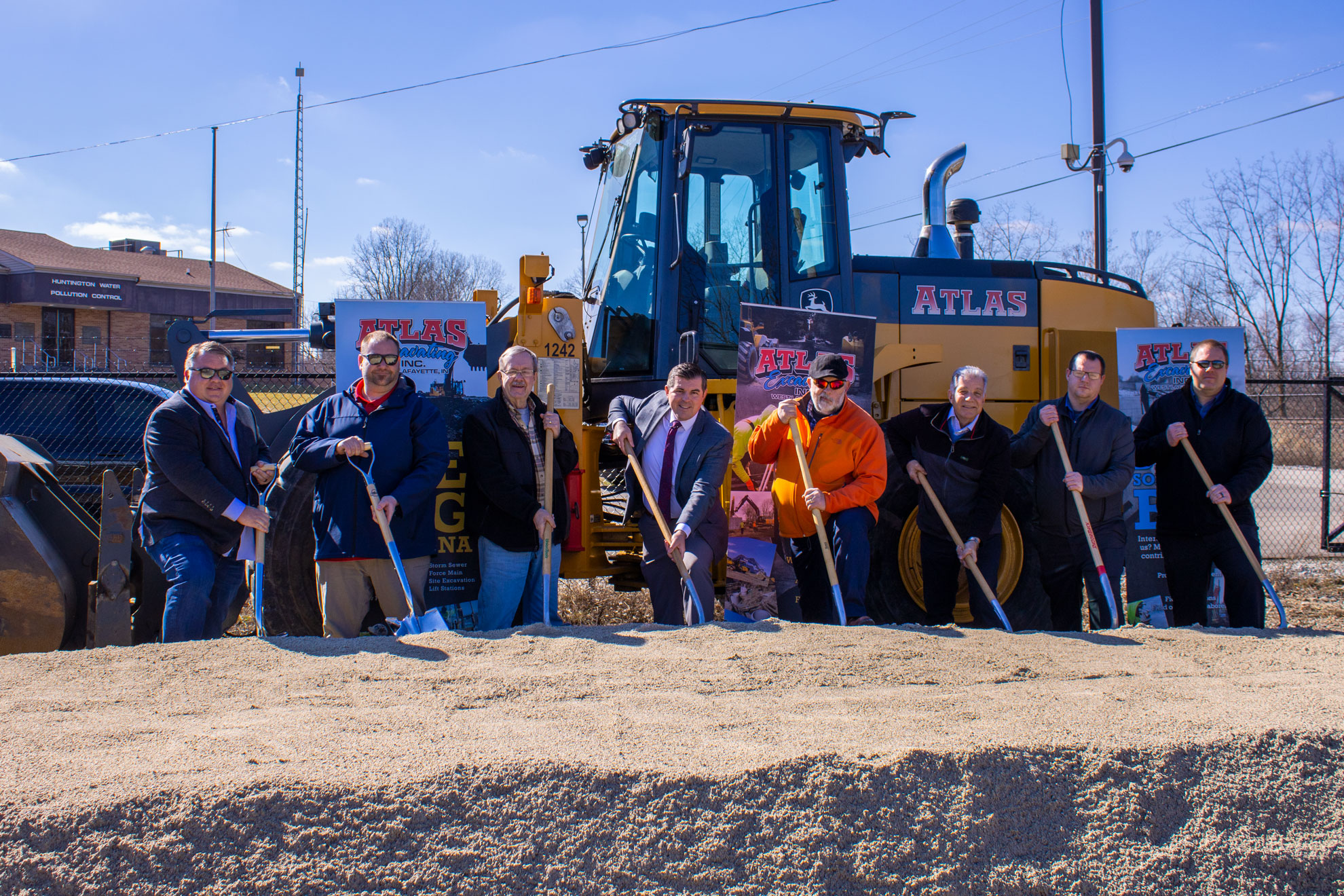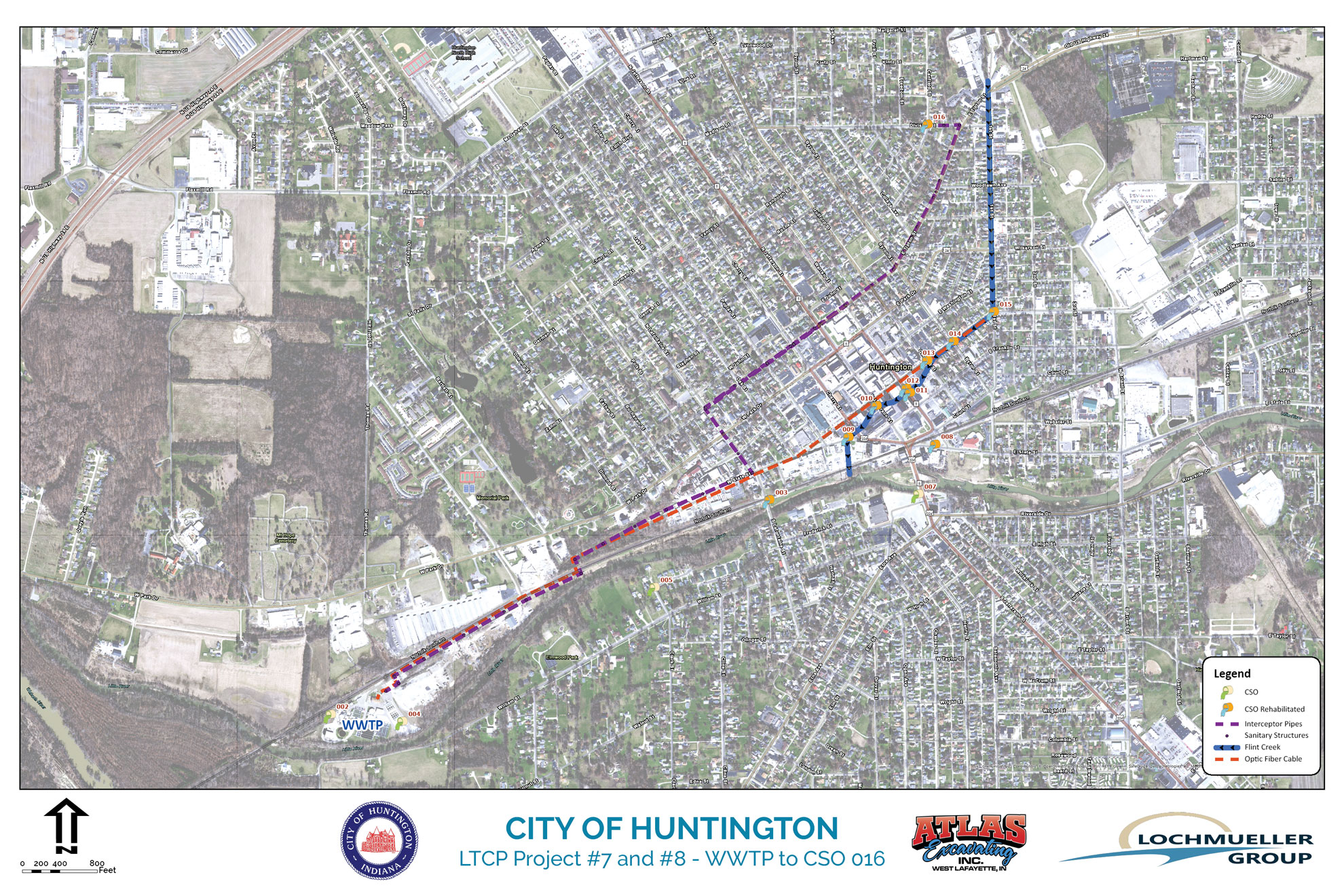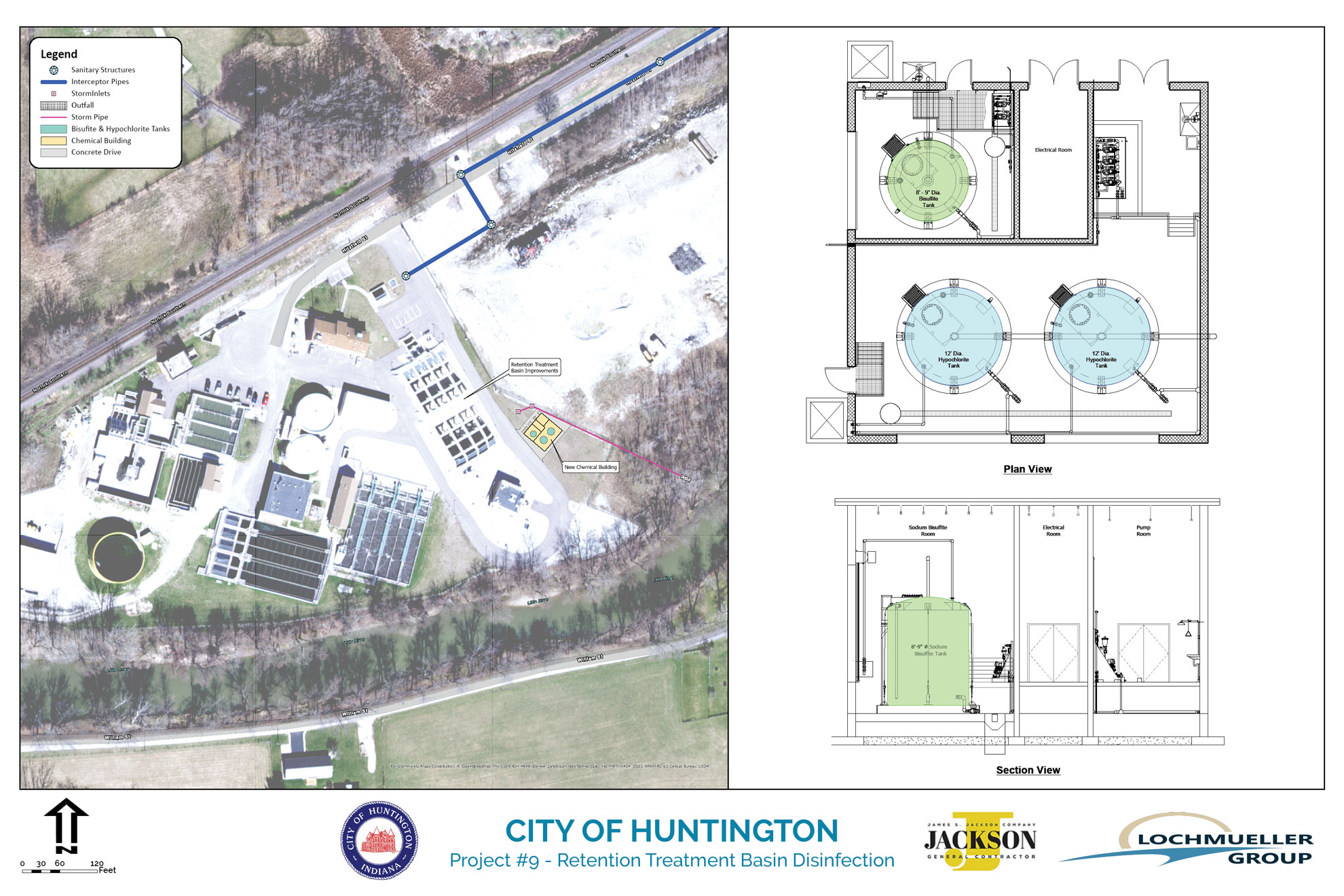Posted Tuesday, February 28, 2023.
Ground Broken on Final Projects in Important LTCP Work

From left to right: Atlas Excavating President and CEO Casey Dillon; Project Manager Ben Studebaker, James S. Jackson Company; Former Mayor Steve Updike; Mayor Richard Strick; Former Mayor Brooks Fetters; City Councilman Joe Blomeke; City of Huntington Director of Public Works and Engineering Services Adam Cuttriss; and Fort Wayne Region Manager Anthony Goodnight, Lochmueller Group.
HUNTINGTON – Former mayors Brooks Fetters and Steve Updike joined Mayor Richard Strick on Tuesday afternoon at the Huntington Water Pollution Control Plant to break ground on the final three projects of a pollution control plan decades in the making.
“In October of 1972, Congress overcame Richard Nixon’s veto to enact the Clean Water Act. Now, several decades later, the City of Huntington is breaking ground on the final three projects of our Long-Term Control Plan,” Mayor Strick said during Tuesday’s ceremony. “This will fulfill our legal obligations under our agreed order with IDEM signed in 2007 by Mayor Terry Abbett. Several administrations have moved the ball forward on this.”
Representatives of the city’s construction partners on the projects, Atlas Excavating and the James S. Jackson Company, and its engineering partner, The Lochmueller Group, also joined the current and former mayors on Tuesday.
A series of nine projects significant to Huntington’s future, the city’s Long-Term Control Plan (LTCP) was designed to prevent untreated wastewater from spilling into local rivers and streams during intense rainfall or heavy snowmelt. The first six projects were completed between 2012 and 2019. Tuesday’s groundbreaking ceremony signified the beginning of construction on Projects 7, 8 and 9.
This work in Huntington has spanned several mayoral administrations. The series of projects traces its roots to requirements first laid out in the Federal Water Pollution Act of 1948 and the Clean Water Act of 1972.
Huntington is one of more than 770 municipalities nationwide and more than 100 in Indiana that has a combined sewer system, or CSS.
In a CSS, sewage and stormwater runoff are carried to the water pollution control plant through the same pipe. Such systems, common more than a century ago when they were first being designed, included outfall pipes that divert excess untreated wastewater directly into nearby waterways to prevent backflows into residents’ homes.
“The bottom line is that we should be good stewards of the environment that we’ve inherited. I do not want to leave this problem that we are facing now for future generations to solve,” Mayor Strick said.
Work on Huntington’s LTCP also is being driven by U.S. Environmental Protection Agency mandates and the agreed order that the Indiana Department of Environmental Management (IDEM) and the city entered into in 2007. The final three projects in the nine-phase plan are well on track to be completed before a final 2026 deadline.
“It’s a real sense of completion,” Fetters said of Projects 7 to 9 now getting under way. “Huntington got started with it back under Wally Smith’s administration back in the late ’70s, with kind of fits and starts for the next 30-some years.”
Former Mayor Terry Abbett (2000-07) was in office when the city submitted its initial LTCP documents for IDEM review in 2003. Updike’s administration (2008-11) signed the plan in 2009, laying the groundwork for the first construction projects to begin following IDEM’s review and agreed-upon revisions.
“It was a work in progress to get things complied with to help make this city a better place to live,” Updike said on Tuesday. “It was an achievement. Let’s put it that way.”
Physical construction on Project 1 began in 2012 after Fetters’ election, and the first six projects were completed during his administration.
“Everybody kept working at it and the stars aligned in such a way, and the resolve of Council to do the right thing, it really says a lot about the citizens of Huntington and their leadership to see this get accomplished within the timeframe that it was required,” Fetters said.
What to Expect
Projects 7 and 8 will involve some of the LTCP’s most intensive construction. Trenches up to 30 feet deep will be dug to install new, large-diameter sewer interceptors along a route from the Division/Canfield intersection to the Water Pollution Control Plant.
Specific to Project 7, a 60-inch-diameter interceptor will be installed between the Division/Canfield and State/Lafontaine intersections.
Project 8 will see the installation of a 72-inch-diameter interceptor that will run along the rail line from State/Lafontaine to the Water Pollution Control Plant.
These two projects ultimately will require complete street, curb, gutter and sidewalk reconstruction along the construction route. The city began tree removal along Tipton Street in January to prepare for construction. The same number of new trees will be replanted as near their original locations as possible after construction, though it will be several years before they reach the size of the trees they will replace.
Atlas Excavating will complete Projects 7 and 8 in shorter sections to minimize exposed trenches in active work areas. Work sites will be kept secure. As an extra precaution, please keep children and pets at a safe distance.
The James S. Jackson Company began Project 9 construction in December 2022. The end result will be a new building at the Water Pollution Control Plant that houses disinfection equipment and treatment chemicals. These will allow combined sewage collected during an intense rainfall or snowmelt event to be treated before it is discharged into the Wabash River.
For a summary of Projects 1-6, please see www.huntington.in.us/city/ltcp.
Exhibits
 |
Video
